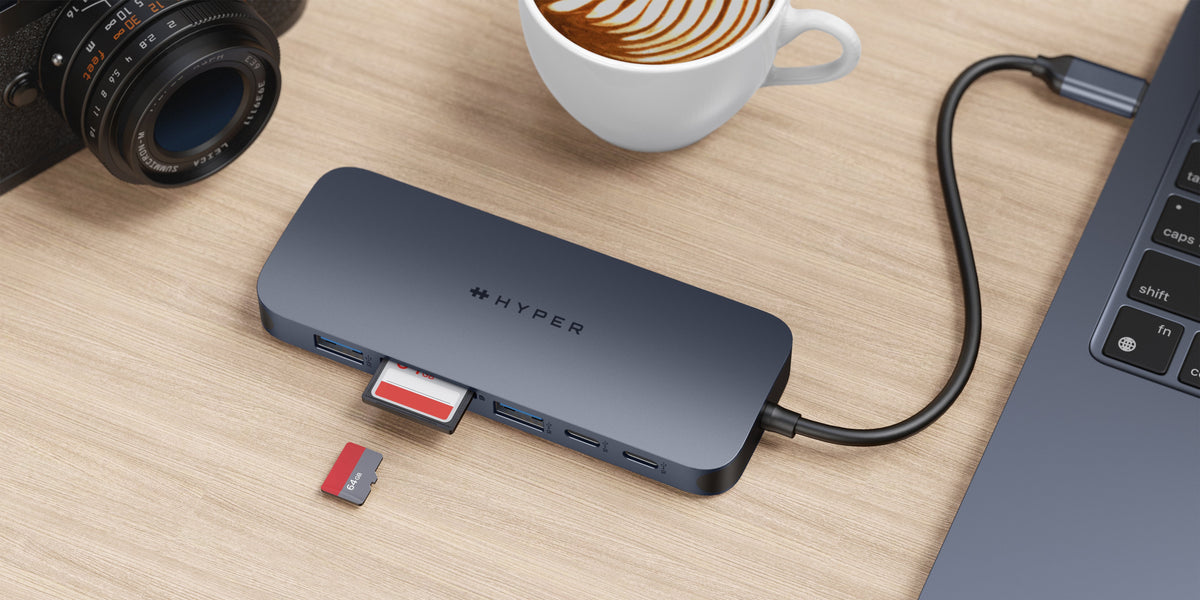The 240W Horizon: Why Your Next Workstation Refresh Demands True USB-C EPR

As an IT leader, you’ve likely faced the 100-watt wall. For years, this has been the frustrating power limit for USB-C, forcing your most powerful workstation laptops to remain tethered to bulky, proprietary power bricks and barrel adapters. This creates a messy and inefficient accessory ecosystem. The dream of a universal, single cable docking solution has always stopped short at high-performance machines. But that’s changing.
The USB Implementers Forum (USB-IF), the consortium that governs USB standards, has officially released the USB Power Delivery (PD) 3.1 specification featuring Extended Power Range (EPR). This new standard shatters the 100W barrier, enabling up to 240W of power over the same USB-C connector. At Hyper, we’ve embraced this new standard and are already delivering the future with EPR-ready products like the HyperJuice 145W GaN Travel Charger, the HyperDrive Next 11 Port USB-C Hub, and 240W-rated USB-C cables.

The power delivery technology of the future is here, so what is the problem?
Slow OEM Adoption of a Superior Standard
While forward-thinking accessory makers are building to the official USB-IF standard, the largest enterprise PC manufacturers are inexplicably slow to adopt it. This lag creates two significant problems for your userbase:
- Limited Options. I frequently meet customers who want a single-cable, universal docking solution for their entire fleet, only to hit the 100W wall when discussing their workstation-grade laptops. While we can often charge these machines, we cannot do so to the manufacturer's specification, creating a support and performance compromise. This reliance on proprietary power delivery stifles your ability to source competitive, universal accessories and locks you into an OEM's ecosystem. Workstation grade docks from these vendors often require a clumsy combination of USB-C and a separate proprietary power tip, defeating the purpose of a universal standard.
- Hinders Flexibility. By clinging to proprietary charging, OEMs are saddling their customers with outdated technology. A truly universal standard simplifies everything from hoteling and hot-desking to remote work and travel. When a single docking station or charger can power every device from a tablet to a 140W mobile workstation, you create a more flexible, efficient, and user-friendly environment.
The Current OEM Landscape
A quick survey of the market reveals a fragmented and confusing state of affairs for IT buyers.
- Pioneers of Compliance: Apple, to its credit, has fully adopted the USB PD 3.1 standard in its latest Thunderbolt 5 laptops, allowing them to charge at up to 140W from a compliant power source.
- Proprietary Persistence: Some OEMs, like Dell, continue to release workstations that require 130W of power, a prime target for the new 140W EPR profile, but inexplicably use their own proprietary charging standards instead of the universal one.
- Confusing Compliance Claims: Perhaps most concerningly, some vendors are marketing "Thunderbolt 5" ports that are not fully compliant. For example, Razer's new Blade 18 boasts Thunderbolt 5 but its power delivery is capped at the old PD 3.0 100W limit. For an IT buyer, this fine print is a critical detail that undermines the promise of the new standard.
Calling all IT Leaders
The universal, single-cable future for all your devices is here, but its full potential is being held back. As a valued IT partner, you have the ability to accelerate this transition.
- Ask Your OEM Representatives: During your next workstation refresh cycle, ask your Dell, HP, and Lenovo reps for their detailed roadmap on full USB-C PD 3.1 EPR adoption. When will their flagship mobile workstations be truly compliant with the 140W or 240W standard? Your demand sends a powerful market signal.
-
Future-Proof Your Peripherals: As you plan your budgets, begin investing in an accessory fleet that is ready for this transition. By deploying EPR-ready docks, hubs, and chargers from Targus and Hyper, you can ensure that as soon as EPR-compliant laptops arrive, your infrastructure is ready to support a truly universal, single-cable experience for every user in your organization.

COLIN MACGREGOR, Field Applications Engineer, US
Colin MacGregor is the go-to field applications engineer for the eastern and central US regions, guiding customers through every phase of the sales cycle, from pre-sales tech consultations and use case analysis to post-sales tier-3 support. A frequent contributor to Targus Tech Talk and a popular webinar host, Colin shares his insights on emerging tech trends and best practices. With a strong foundation in science, engineering, and IT, Colin specializes in seamless hardware and software integration, network engineering, and server configuration. His role extends globally, consulting with product development teams to channel customer feedback into future-ready solutions.


